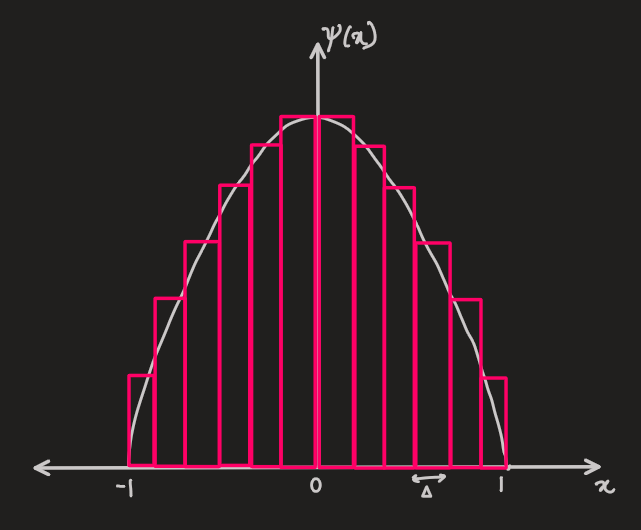PX262 - C4 - probability distributions
-
taking the lowest energy state of a particle in an infinite potential well, and its wavefunction
-
the position eigenfunctions are defined by the dirac delta functions, and the whole wavefunction could be viewed as a sum of an infinite number of these functions
-
considering a experiment where the particle is found in one of a series of detectors of width,
-
if the particle is measured in a particular detector, the wavefunction will be non-zero everywhere except on that detector, with a peak
and width, -
the height is given by the fact that the probability of finding the particle in that strip is one:
note:
comes from the fact that probability comes from -
the
wavefunction is denoted by , which is properly normalized -
the wavefunction before such measurement is
-
if
is divided into a strips of width, , which can be approximated by inside the strip

would represent a strip of height covering the strip, and is zero outside it:
where,
- the weights correspond to the probability of finding the particle in each strip
- the probability of finding the particle in the
strip is: - generalising to any measurement by the operator
- this exploits the property of hermitian operators that their wavefunctions form a complete set, and that any well-behaved function can be expressed as a liner superposition of the eigenfunctions